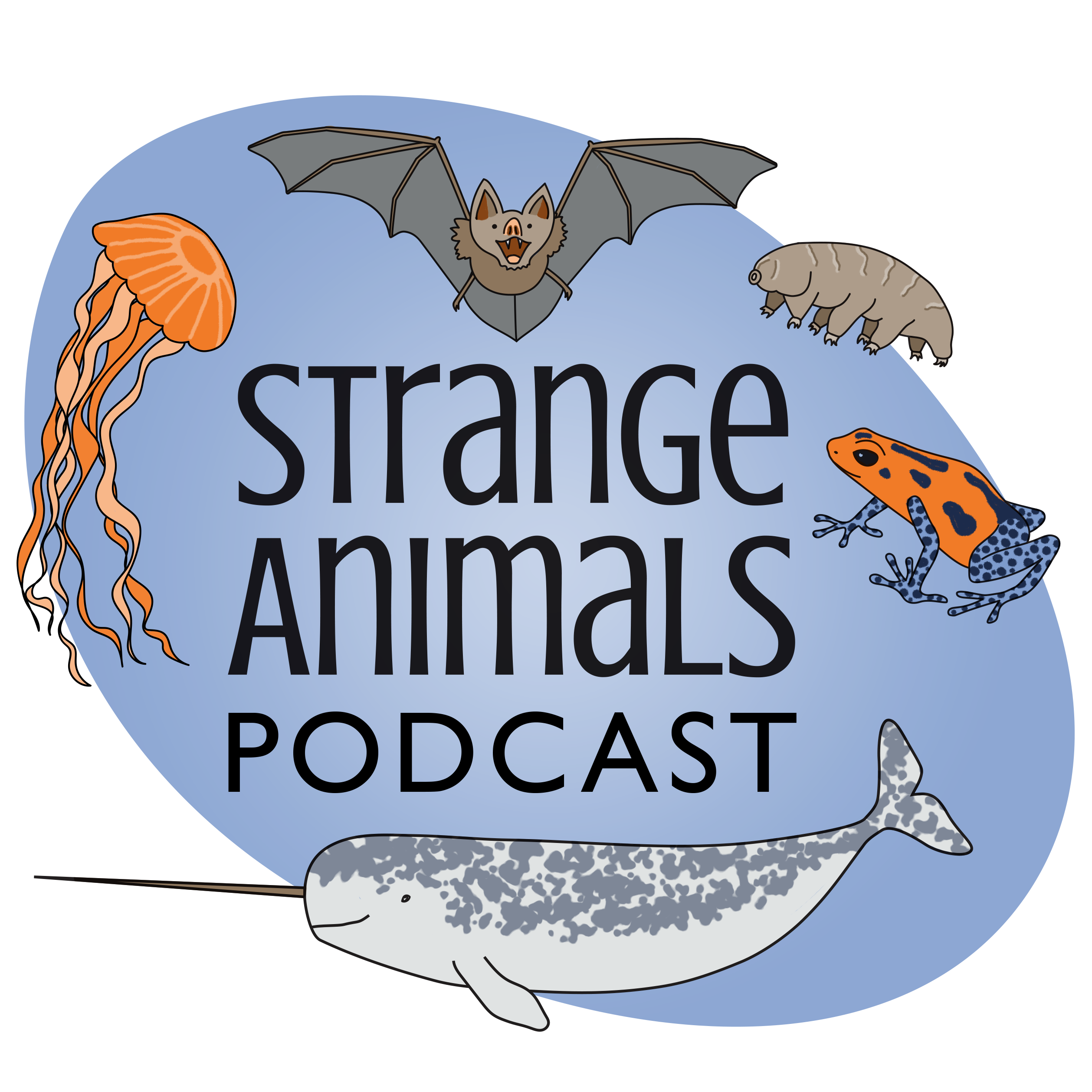Episode 241: Weird and Wonderful Squirrels

Sign up for our mailing list! We also have t-shirts and mugs with our logo!\n\nOur pre-launch Kickstarter page! You can see what the book cover will look like!\n\nThanks to Liesbet and Enzo for their suggestions this week! Let's learn about squirrels!\n\nFurther reading:\n\nProject Squirrel\n\nInterspecies Breeding Is Responsible for Some Squirrels' Black Coloring\n\nThe Indian giant squirrel, without filter (left) and with filter (right):\n\n \n\nSome variable squirrels (see lots more at iNaturalist):\n\n \n\nThe Eastern gray squirrel:\n\n\n\nThe Eurasian red squirrel:\n\n\n\nThe fox squirrel:\n\n\n\nWhite Eastern gray squirrels (photos taken from the White and Albino Squirrel Research Initiative):\n\n \n\nA white variable squirrel spotted in Thailand (picture found here):\n\n\n\nThe African pygmy squirrel:\n\n\n\nThe least pygmy squirrel of Asia:\n\n\n\nShow transcript:\nWelcome to Strange Animals Podcast. I\u2019m your host, Kate Shaw.\nIt\u2019s finally the squirrel episode! Both Liesbet and Enzo have suggested squirrels as a topic, and Enzo specifically asked about white squirrels, hybrid squirrels, and squirrels in danger. We\u2019re going to cover all those, and also a few squirrel mysteries!\nFirst, though, a quick note to say that the Kickstarter campaign for the Strange Animals Podcast book is definitely going to happen NEXT MONTH! It\u2019ll go live in early October 2021. Don\u2019t worry, I\u2019ll let you know when so you can go pre-order a copy of the book if you want, and in fact I think I\u2019ll do a bonus episode the first day of the Kickstarter. If you want to get an email to remind you when the campaign launches, there\u2019s a link in the show notes to the pre-launch page where you can request an email notification on launch. You can also see what the book cover will look like! Now, on to the squirrels.\nThe animal we generally just call a squirrel is specifically a tree squirrel, as opposed to ground squirrels. Tree squirrels are arboreal, which means they live in trees, although they spend plenty of time on the ground too. Squirrels mostly eat nuts and seeds, including acorns and the seeds inside pine cones, but will also eat berries, flowers and buds, tree bark and sap, fungus, and sometimes insects, bird eggs, and even baby birds. Squirrels are rodents and are active in the daytime.\nSquirrels can be helpful to trees even though they eat tree nuts, because most species bury nuts to dig up and eat later. The squirrel doesn\u2019t always remember where it hid all its nuts, and in spring the buried nuts sprout and grow into new trees. Some species also hide nuts in caches, often in holes in trees.\nA squirrel sleeps in a nest made of dead leaves and sticks it builds in the branches of a tree. The nest is called a drey and it\u2019s lined on the inside with moss, grass, and other soft, warm material. A mother squirrel will line the nest with some of her fur right before her babies are born, so the nest is especially soft and warm. Some species also nest in old woodpecker holes. In winter when it\u2019s cold, several squirrels may share the same drey to stay warm, but squirrels are usually solitary. They don\u2019t hibernate, but like most of us, they sleep more in winter and are less active.\nMost people know what a squirrel looks like, because it\u2019s such a common animal throughout most of the world. Some squirrel species get used to humans and often live in people\u2019s yards and in city parks. A tree squirrel has a long, fluffy tail, a long, slender body, relatively short legs, small ears, and large eyes. It\u2019s usually gray or brown and sometimes has spots or stripes.\nSome tree squirrels look different from the squirrels you may be used to, depending on where you live. Squirrels of the genus Ratufa are called giant squirrels and they\u2019re the size of domestic cats. They live in parts of Asia, especially southeast Asia. The Indian giant squirrel lives in India, and not only is it especially big, up to 20 inches long, or 50 cm, not counting its long tail,